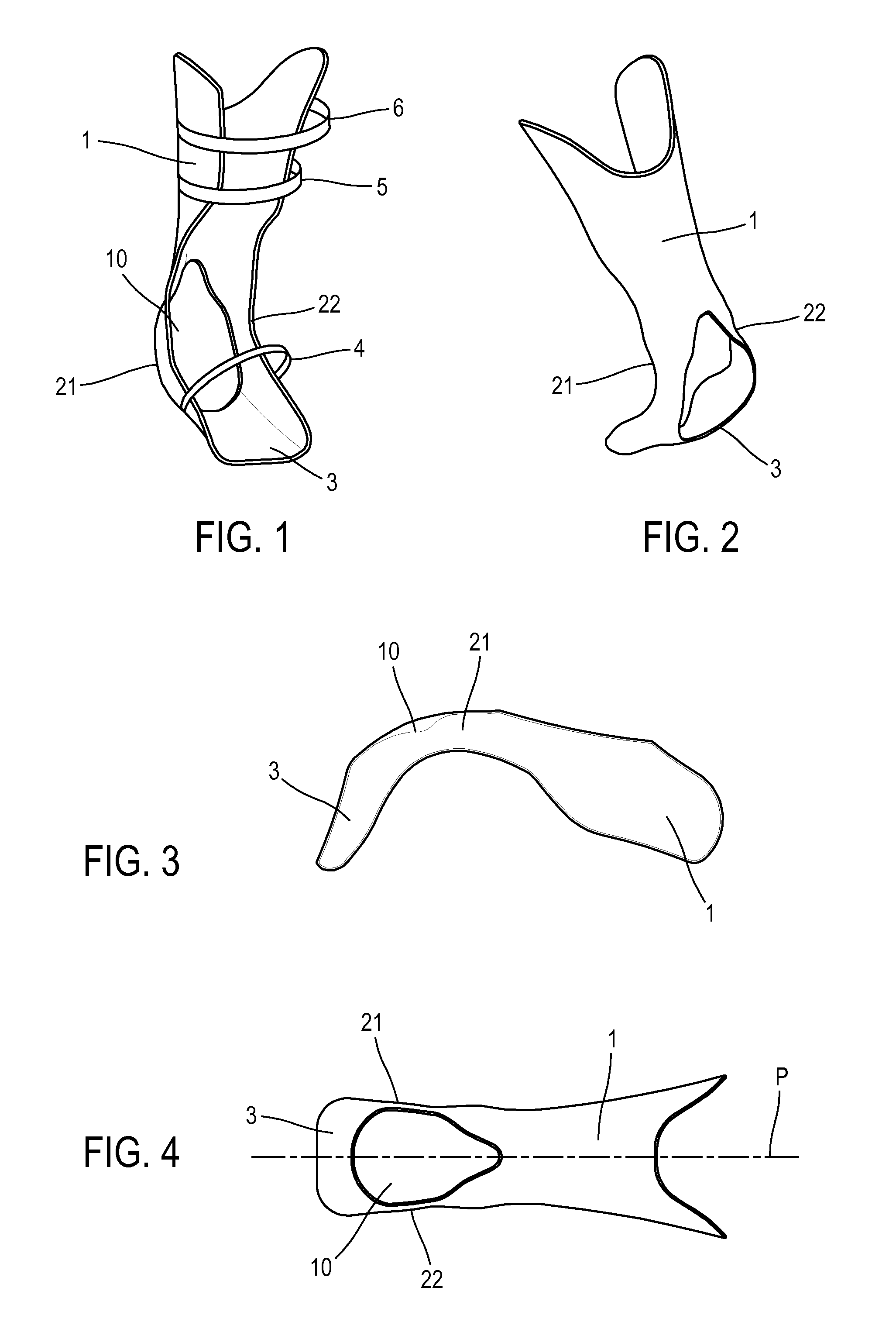Talotarsal orthosis
a technology of talotarsal and talus, which is applied in the field of rigid orthoses, can solve the problems of pain in the wearer of the orthosis, the pain of the orthosis, and the relatively complex manufacture of the orthosis, and achieve the effect of stabilising the calcaneus and the cuboid bon
- Summary
- Abstract
- Description
- Claims
- Application Information
AI Technical Summary
Benefits of technology
Problems solved by technology
Method used
Image
Examples
Embodiment Construction
[0028]FIG. 1 illustrates an orthosis according to the invention, of anatomical form, intended for example to immobilise an ankle weakened by an impact or inappropriate tension. This orthosis has an anatomical shape that therefore corresponds partially to the external surface of the bottom of the leg and a part of the foot close to the heel. The orthosis comprises several rigid regions 1, 21, 22, 3. It is covered internally by a layer or sheath, for example made of viscoelastic foam (not shown or referenced). This sheath is in direct contact with the skin or a sock or a stocking covering the ankle and / or foot of the patient. The sheath is intended to improve the comfort of the patient since the orthosis is preferentially made of a rigid plastic material such as polyethylene. As will be explained below, such a sheath reduces the pressure points on and around the ankle of the patient. It preferentially covers the entire so-called internal surface of the orthosis. The term “Internal sur...
PUM
 Login to View More
Login to View More Abstract
Description
Claims
Application Information
 Login to View More
Login to View More - R&D
- Intellectual Property
- Life Sciences
- Materials
- Tech Scout
- Unparalleled Data Quality
- Higher Quality Content
- 60% Fewer Hallucinations
Browse by: Latest US Patents, China's latest patents, Technical Efficacy Thesaurus, Application Domain, Technology Topic, Popular Technical Reports.
© 2025 PatSnap. All rights reserved.Legal|Privacy policy|Modern Slavery Act Transparency Statement|Sitemap|About US| Contact US: help@patsnap.com


